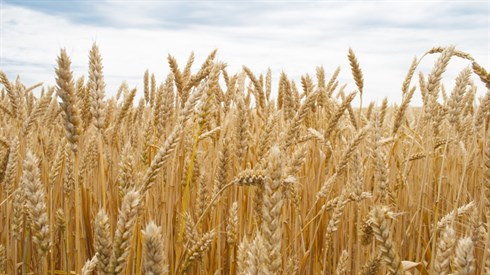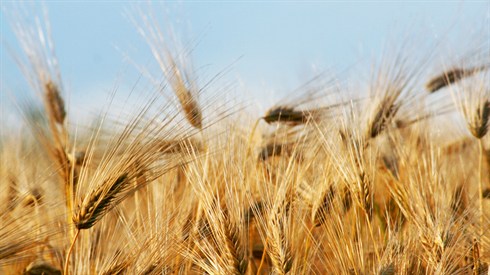- Sections
- Bemare Habazak - Rabbis Questions
22
Answer: The gemara (Bava Batra 97a-b) indeed says that only wine that is fit (b’di’eved suffices) for nesachim is valid for Kiddush and discusses various cases, but not yayin mevushal (=yymv). Another gemara (Avoda Zara 30a) says that a non-Jew’s touching of yymv does not make it forbidden, and this is likely because it is not fit for nesachim. Rashi (Shut 88) rules that yymv does not count as wine to the extent that its beracha is Shehakol. Tosafot (Bava Batra 97a) understands Rashi’s rationale as being because the cooking makes it deteriorate, but derives from a Yerushalmi that yymv is wine and is valid even for Pesach’s arba’ah kosot. The Rambam (Shabbat 29:14) disqualifies yymv for Kiddush because it is not fit for nesachim. The Shulchan Aruch (Orach Chayim 272:8) cites both opinions, but prefers the lenient one. The Rama (ad loc.) supports the lenient opinion if one does not have uncooked wine of equal quality. Concerning the beracha, we clearly rule that it is Borei Pri Hagafen (Shulchan Aruch, OC 202:1).
We can understand why you want to be machmir to avoid yymv for Kiddush. However, most people are not machmir, and it is worthwhile to respect that and understand the likely rationale. For one, nowadays "yymv" usually means pasteurized (lower temperature than what we would normally consider cooking). Poskim dispute whether pasteurization is considered yymv. Regarding styn, the Shulchan Aruch (Yoreh Deah 123:3) is somewhat lenient on the degree of cooking (see Yabia Omer VIII, YD 15), and Rav Moshe Feinstein is lenient if it reaches 175° F; Rav SZ Auerbach is stringent regarding styn on pasteurized wine (Minchat Shlomo I:25). Stringency regarding styn indicates leniency regarding Kiddush. Furthermore, the reason that a lot of kosher wine is yymv is that it is difficult for the public to ensure that they will not have styn problems, sometimes with little warning. Therefore, for a shul or a family to have a policy of using yymv makes enough sense to be at least as important as using it because of its superior taste (see Rama above).
Adding in sugar is equivalent to the classical poskim’s discussion of adding honey. While the Rambam (ibid.) is confident about yymv being a problem for Kiddush, he is equivocal about wine with added honey. This likely has to do with the addition being done to improve the taste or that is a minority of the wine. Apparently, even Rashi would agree that we would follow the majority and make Borei Pri Hagafen (see Rama, OC 202:1). So in some ways, if one wants to be machmir but has a choice between yymv and sweetened wine, the latter could be preferable (Kitzvei Harim 51). This is strengthened by the likelihood that one bought the sweetened wine because he prefers the taste. If sweetened non-yymv has a problem of styn (see below), yymv could have at least one advantage, as discussed above.
Does added sugar remove the problem of styn? There are some grounds to claim that the styn leniency of yymv does not apply to sweetened wine (see Rosh, Avoda Zara 2:13). However, the Rambam (Ma’achalot Assurot 11:10) equates the two in this regard based on fitness for nesachim. The Shulchan Aruch (YD 123:4) rules that sweet additives remove the problem of styn if it changes the taste. It is very unclear how to figure out whether a wine qualifies for this leniency. In practice, while many kosher wines write on the label that is yymv, to indicate no styn, I have never seen a hechsher that wrote that is sweet enough to remove styn. We would not recommend making assumptions on these grounds unless it is a drink that has so much of additives that it does not come across as a normal wine.

The Focus of Discussions at the Seder
Various Rabbis | Nisan 5773

Shehecheyanu, Clothes, and Renovations During Sefira
Rabbi Daniel Mann

When to Cut the Challa?
Rabbi Daniel Mann | Elul 13 5777

Ask the Rabbi: Indirect Responsibility for Theft
Rabbi Daniel Mann | Shevat 5785

This is the Way We Bake Our Bread!
Rabbi Yirmiyohu Kaganoff | Sivan 21 5775

Double Wrapping Food in a Treif Oven
Rabbi Daniel Mann | Kislev 4 5777

Davening Late with a Minyan
Rabbi Daniel Mann | Adar I 29 5779

Why is Hafrashat Challah So Important
Rabbi Yosef Tzvi Rimon | 5778






